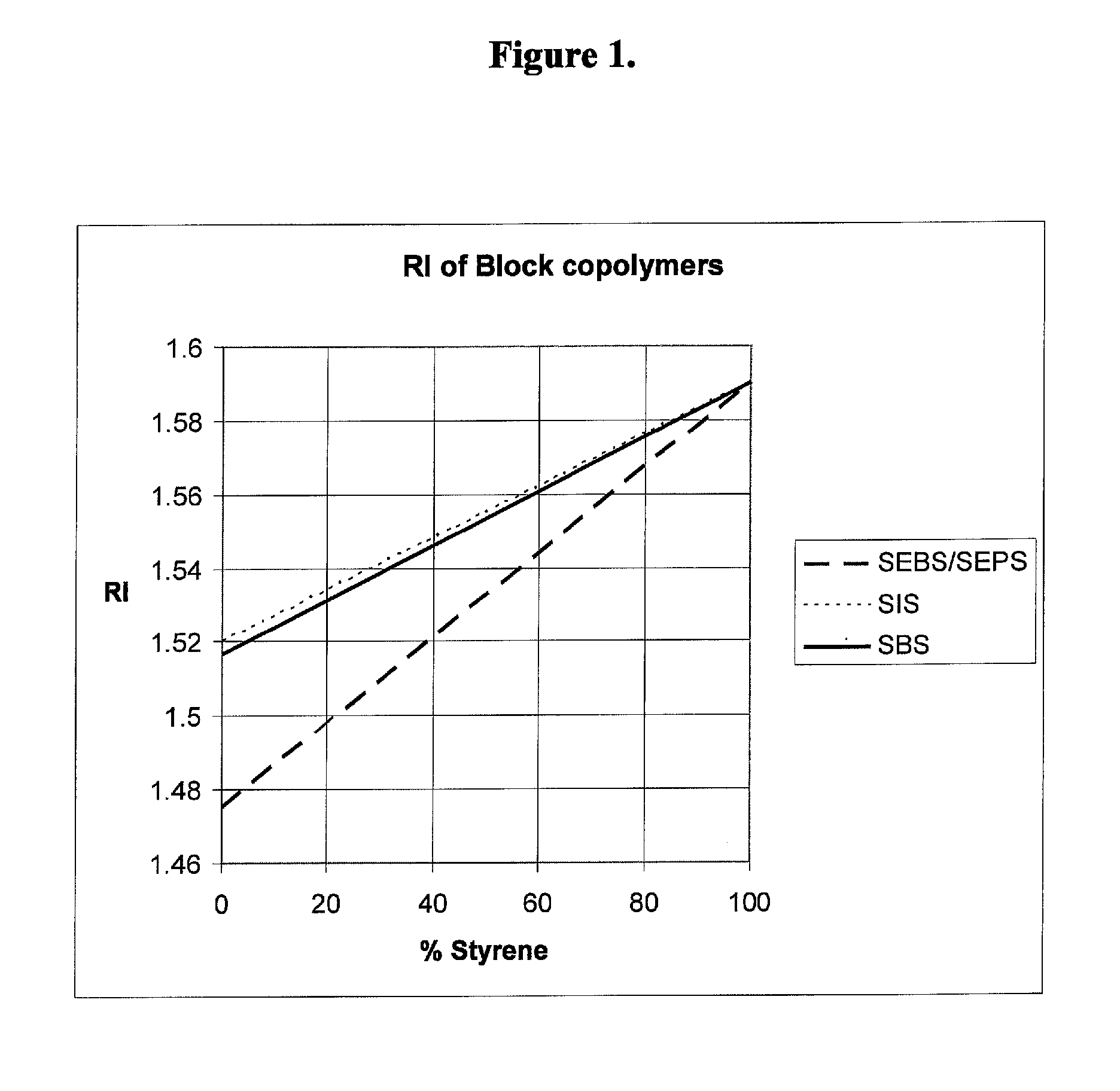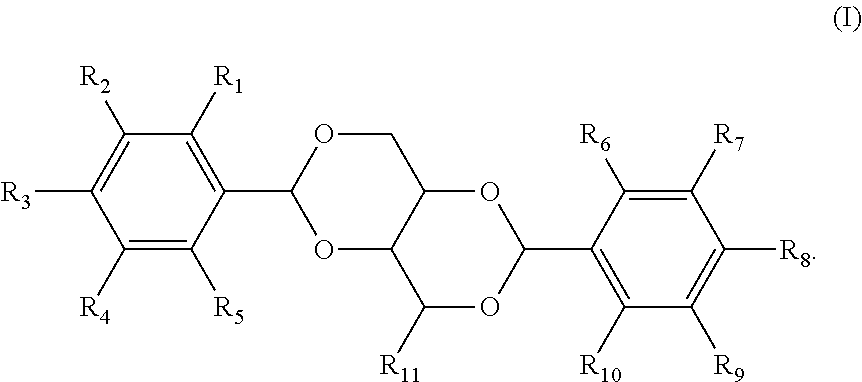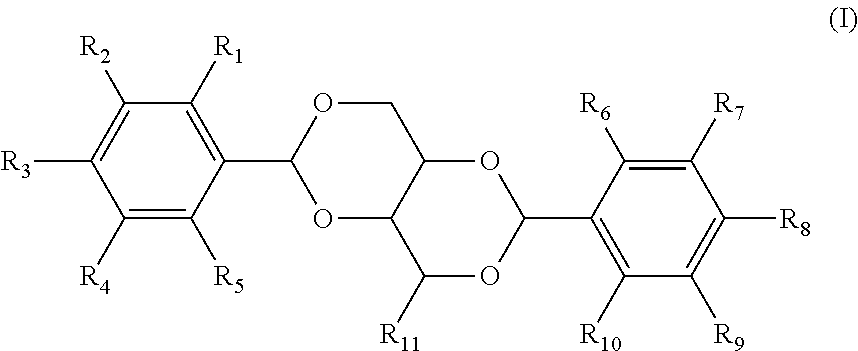Hydrogenated styrenic block copolymers blends with polypropylene
a technology of hydrogenated styrenic block and polypropylene, which is applied in the direction of synthetic resin layered products, chemical/physical processes, tubular articles, etc., can solve the problems of low temperature impact and compromise, and achieve the effect of improving clarity
- Summary
- Abstract
- Description
- Claims
- Application Information
AI Technical Summary
Benefits of technology
Problems solved by technology
Method used
Image
Examples
example 1
[0042]Blends 1-12 (formulas are parts by weight of each component) show, in Table 1, that with two different clarified random polypropylene copolymers it was necessary to both match the index of refraction of the added selectively hydrogenated styrene block copolymer and to add addition clarifying agent to obtain low haze in a 0.125 inch thick molded disk. Blends with 20 wt. % Kraton G 1657 were hazy even if additional clarifying agent was added because the index of refraction is 0.013 refractive index units different from the polypropylene random copolymers. Because the index of refraction of the G 1652 SEBS is closer to the random polypropylene copolymer (within 0.006 refractive index units), blends with 20 wt. % Kraton G 1652 exhibited better haze than G 1657 in the blends which also contain additional clarifying agent. The best haze was obtained when the index of refraction of the blend of Kraton G 1657 and Kraton G 1652 (GH-893) closely matched the polypropylene copolymer and a...
example 2
[0044]Example 2 shows the level of additional clarifying agent that was required to improve the clarity significantly in Table 2-I. There appeared to be some dependence on the random polypropylene copolymer used but roughly 500 to 1,000 ppm of the additional clarifying agent (or 0.5 wt % to 1 wt % of the 10% masterbatch of clarifying agent in polypropylene) were needed. There were only marginal improvements in the clarity (haze) above these levels of clarifying agent.
[0045]Blend 19 (Table 2-II ) showed that additional pure clarifying agent could be added as well as masterbatches of the clarifying agent in polypropylene to achieve improved clarity and low haze.
example 3
[0046]Example 3 shows the effect of diluting selectively hydrogenated styrene block copolymers with polyethylene copolymers which also closely match the index of refraction of the random polypropylene copolymers (Table 3). GH-893 was an extruder mixed masterbatch of G 1652 / 1657. GH-893C was an extruder mixed masterbatch of G1652 / G1657 / Engage 8402 where the polyethylene copolymer Engage 8402 was 33 wt. % of the masterbatch. GH-893D was an extruder mixed masterbatch of G1652 / G1657 / Engage 8402 where the Engage 8402 was 25 wt. % of the masterbatch. As can be seen from blend 23 polyethylene copolymers such as Exact 0203 which match the index of refraction of the polypropylene made low haze blends with clarified polypropylene random copolymer with no additional clarifying agent. However, polyethylene copolymers such as Exact 0203 and Engage 8402 which matched the index of refraction of the clarified polypropylene random copolymer do not have very good low temperature impact properties in ...
PUM
| Property | Measurement | Unit |
|---|---|---|
| Temperature | aaaaa | aaaaa |
| Temperature | aaaaa | aaaaa |
| Temperature | aaaaa | aaaaa |
Abstract
Description
Claims
Application Information
 Login to View More
Login to View More - R&D
- Intellectual Property
- Life Sciences
- Materials
- Tech Scout
- Unparalleled Data Quality
- Higher Quality Content
- 60% Fewer Hallucinations
Browse by: Latest US Patents, China's latest patents, Technical Efficacy Thesaurus, Application Domain, Technology Topic, Popular Technical Reports.
© 2025 PatSnap. All rights reserved.Legal|Privacy policy|Modern Slavery Act Transparency Statement|Sitemap|About US| Contact US: help@patsnap.com



